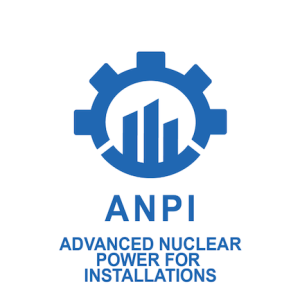 San Diego-based General Atomics (GA) said on 4 February that, after nearly five years of fabrication and a two years of challenging tests, it has achieved the first major milestone in one of the largest US contributions to the ITER fusion project under construction in France.
San Diego-based General Atomics (GA) said on 4 February that, after nearly five years of fabrication and a two years of challenging tests, it has achieved the first major milestone in one of the largest US contributions to the ITER fusion project under construction in France.
The first module of the ITER Central Solenoid will join six others still in fabrication to make up the largest pulsed superconducting magnet in the world. GA said the first module is now ready for shipment to the ITER site. The module was built at GA’s Magnet Technologies Centre in Poway, California, under the direction of the US ITER project, managed by Oak Ridge National Laboratory (ORNL). It will be shipped to France later this year.
When ITER is completed, the 1000t, 59-foot-tall Central Solenoid will sit in the heart of the fusion device, driving 15 million amperes of current through ITER’s plasma to heat and stabilise the fusion reaction. ITER is on schedule to begin first plasma operations in 2025.
“The Central Solenoid ranks among the largest, most complex and demanding magnet programmes ever undertaken,” said John Smith, GA’s Director of Engineering and Projects. “I think I speak for the entire team when I say this is the most important and significant project of our careers. We have all felt the responsibility of working on a job that has the potential to literally change the world. This is a significant achievement for the GA team and US ITER.”
Fabrication of the first solenoid module began in 2015, preceded by almost four years of collaboration with experts at US ITER to design the process and tools for fabricating the modules. Each 14-foot-diameter module requires more than two years of precision fabrication and comprises 3.6 miles of niobium-tin superconducting cable with six layers of insulating tape totalling more than 180 miles.
The module was subjected to a series of demanding tests during and after its production, placing it in extreme conditions similar to those it will experience during ITER’s operation. These included near-complete vacuum and cryogenic temperatures required for the magnet to become superconducting (4.5 Kelvin, about -450 degrees Fahrenheit or -270 degrees Celsius).
GA engineers and technicians encountered and overcame a number of challenges during two years of testing. Working with experts at ORNL and other organisations, the engineers developed several key design changes to complete the testing successfully. Lessons learned on the first Central Solenoid module have been applied to the fabrication of the subsequent six coils, one of which will serve as a spare. The second module is now undergoing a battery of tests, and is expected to be shipped to ITER soon after the first one. The modules will be transported one at a time by a specially designed trailer to the Texas Gulf Coast, then shipped to Marseilles before getting trucked to ITER.
Sixth PF coil arrives on site
In late January, the sixth poloidal field coil for ITER was moved to storage on the site after completing its long journey from China. This followed a month of cold tests at the European winding facility, also on the site. It is expected to remain in storage for six weeks until it is required for assembly. Along with the physical move came a change of ownership, as the coil was handed over by the European Domestic Agency Fusion for Energy (F4E), responsible for its procurement, to the ITER Organisation, in charge of machine assembly.
The coil, manufactured in China under a European contract, was more than eight years in fabrication. It is the second smallest of the six ITER ring-shaped magnets (11.5 metres in diameter) but, at 400 tonnes, is by far the heaviest. The coil was delivered to ITER in June 2020 and was the first to be cold-tested on site. Some light equipment work (such as the addition of protective covers) will be performed while the component is in storage and before it takes its final trip in April to be lowered into the assembly pit.
For a few years, the coil will sit at the bottom of the pit on temporary supports before being raised to its final position towards the end of the assembly process when all 18 toroidal field coils and 9 vacuum vessel sectors have been installed.
Europe and China worked together to manufacture this first-of-a-kind magnet which will control the shape and stability of the ITER plasma. Cooperation started in 2013 and has been complex. When it became clear that Europe could not manufacture both the fifth and sixth poloidal coils in parallel, due to their tight delivery deadlines almost one month apart, China volunteered to assist by making available its personnel at the Institute of Plasma Physics of the Chinese Academy of Sciences (ASIPP). An agreement was signed and F4E staff formed part of the team offering guidance and expertise.
Pierluigi Valente, F4E Technical Responsible Officer for the procurement, recalled: “When we decided to produce the coil in collaboration with China, we had to set up an entire operation remotely, work together for the documentation, the tooling, and follow up the production of the equipment. In parallel, when fabrication started to gain pace, we started discussing how to transfer the coil. Roadworks were required to improve the ITER itinerary so that a component of that size and load could be transported. When the coil was delivered on-site last summer, we finally saw all those years of work coming together.”






